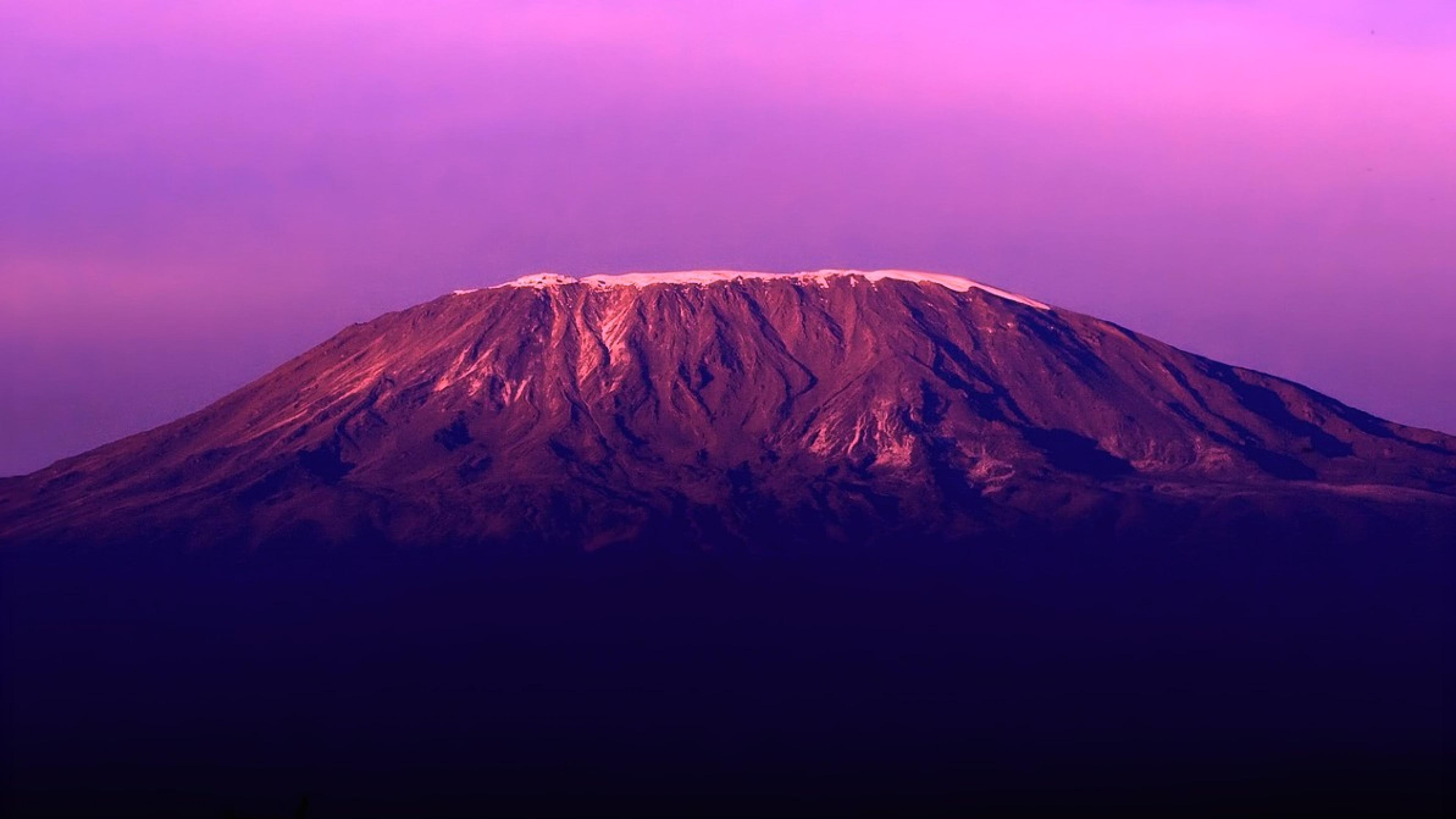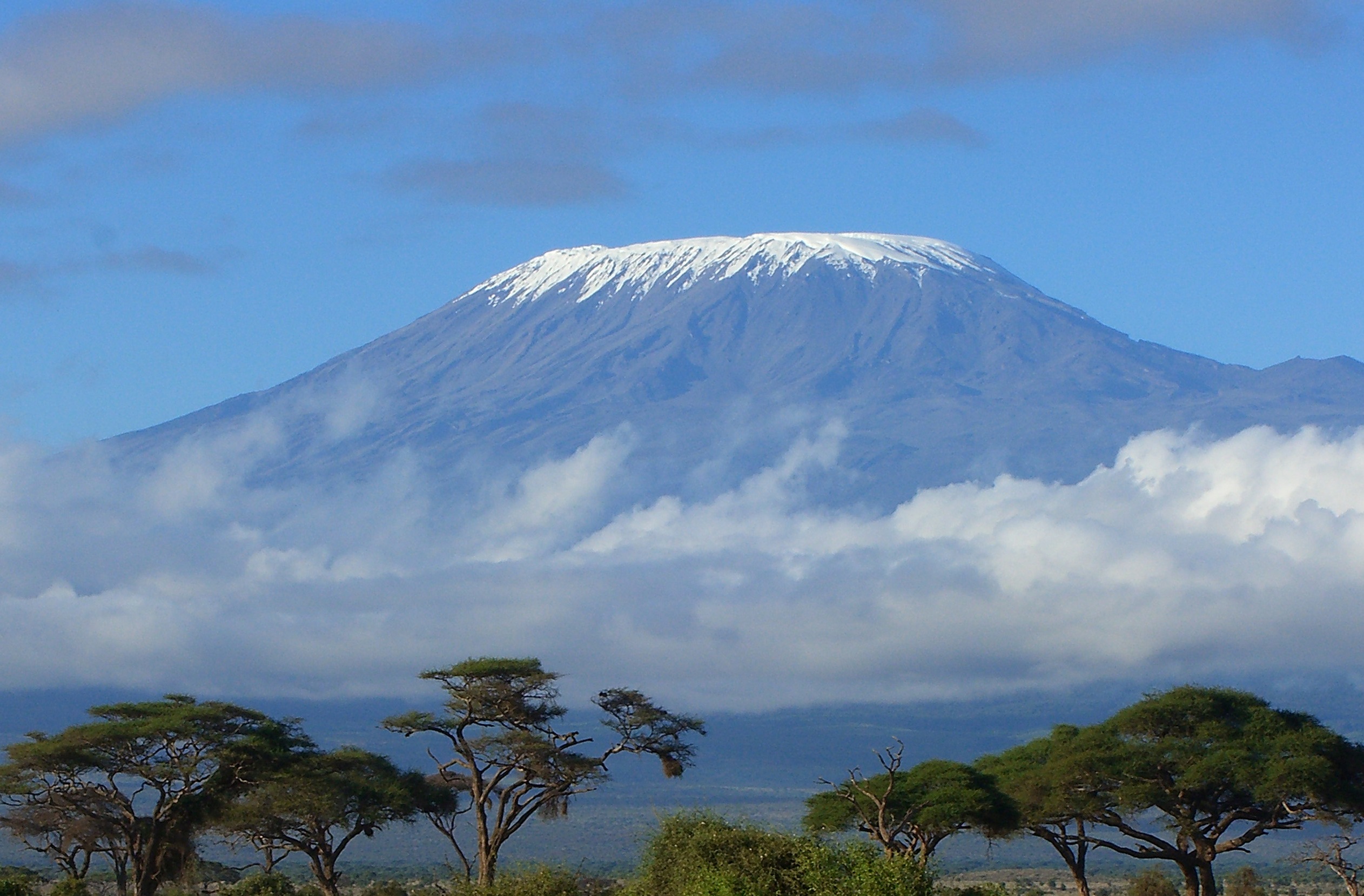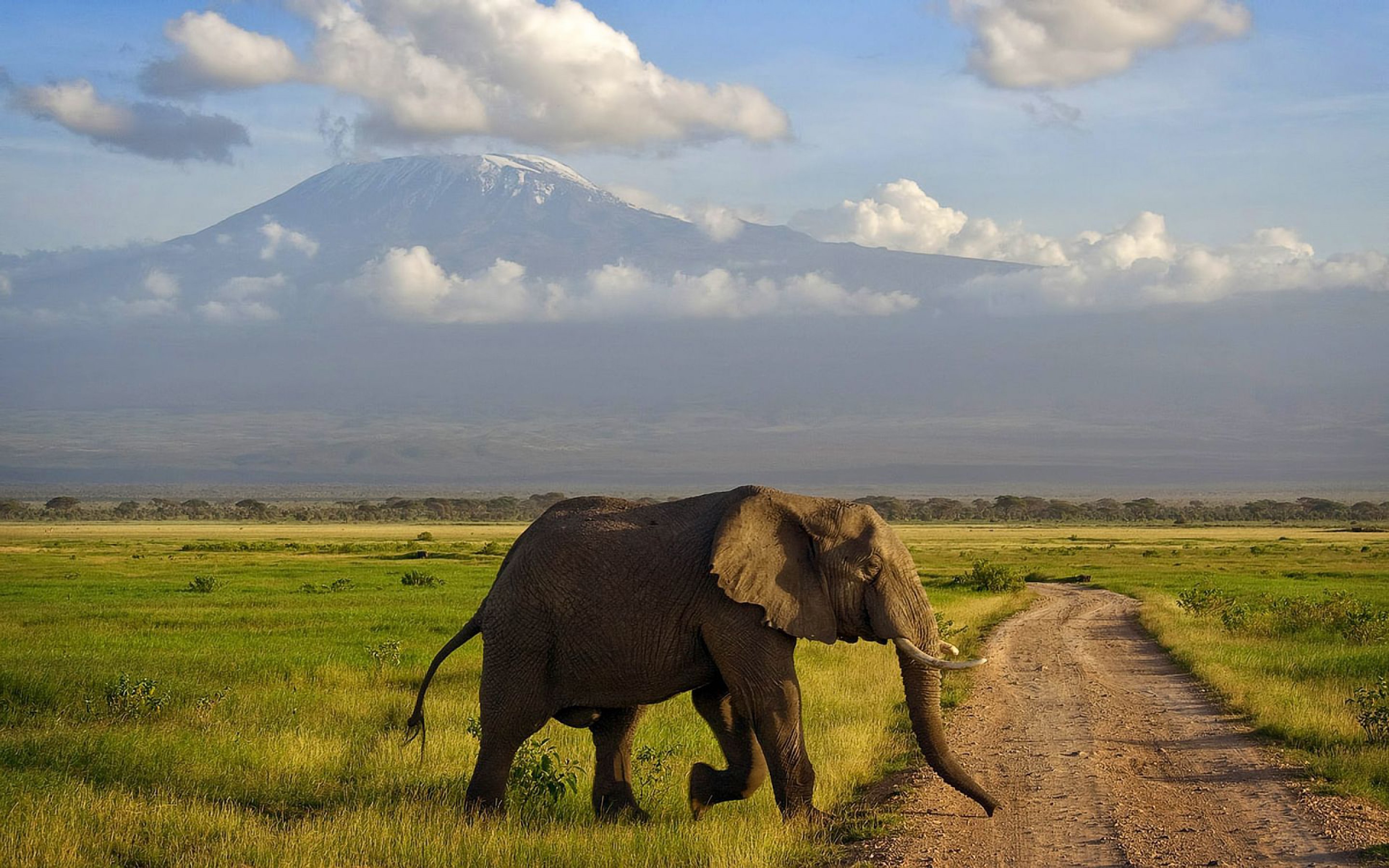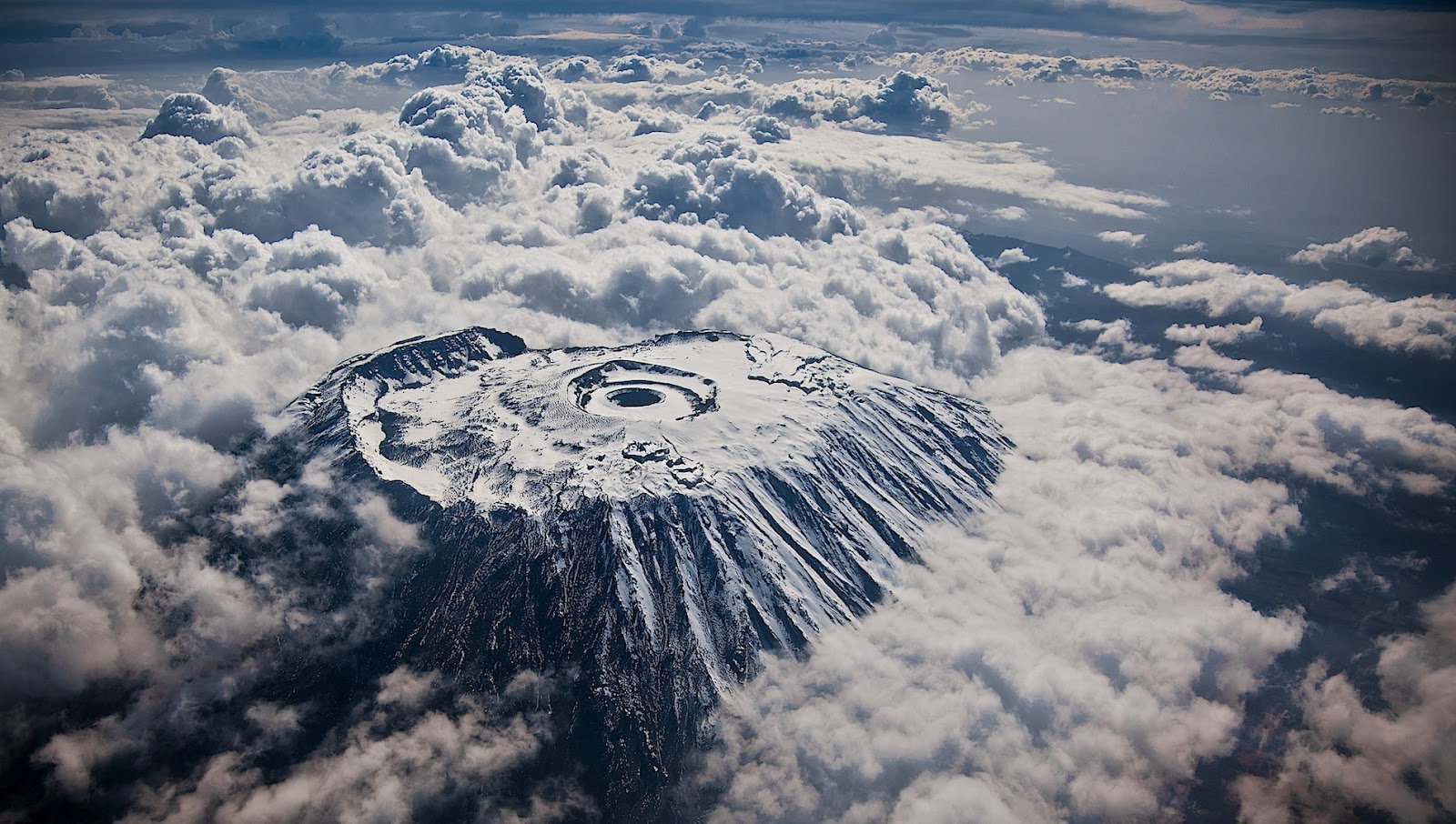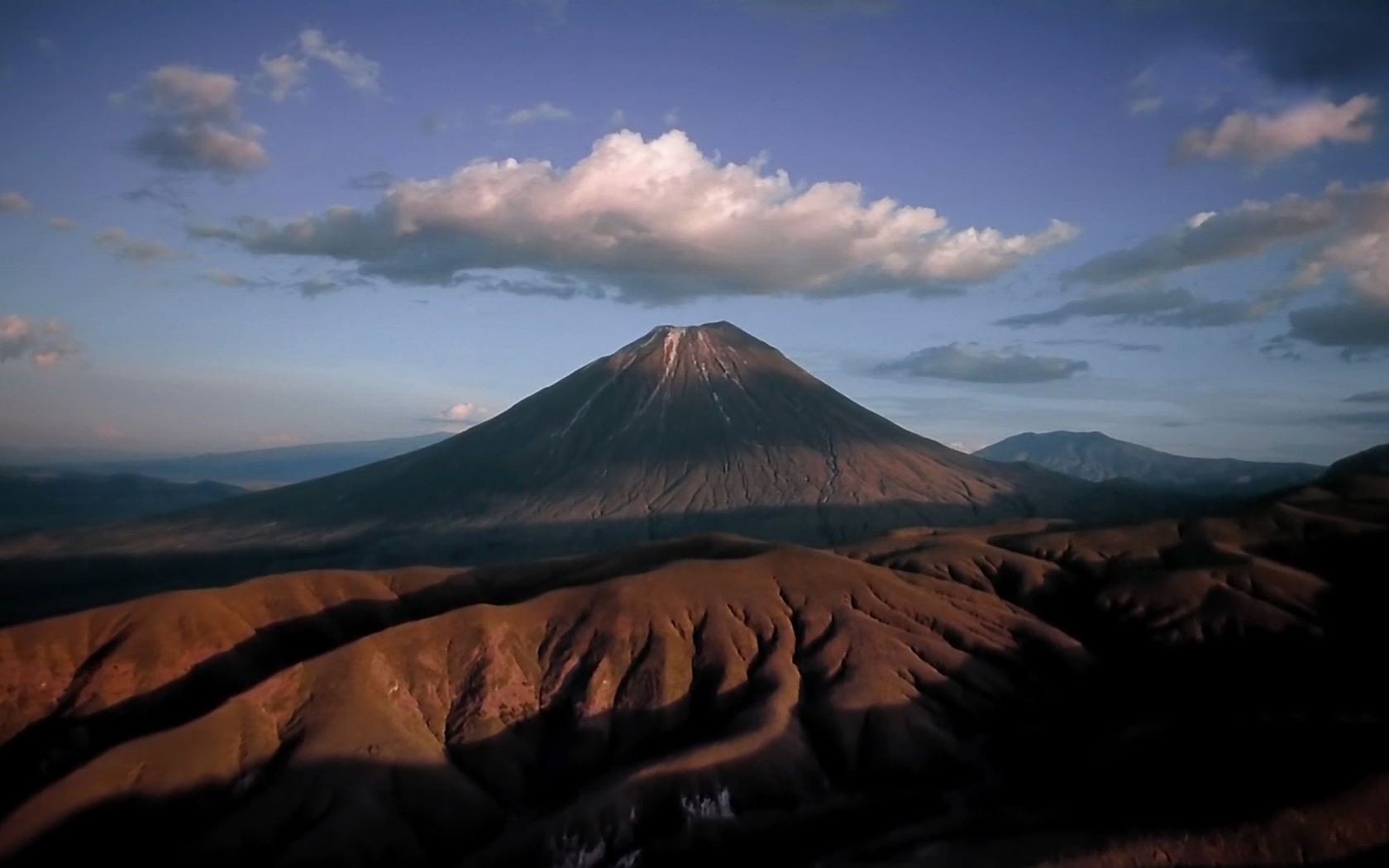At 5,895 m, Kilimanjaro is the highest point in Africa. This volcanic massif stands in splendid isolation above the surrounding plains, with its snowy peak looming over the savannah. The mountain is encircled by mountain forest. Numerous mammals, many of them endangered species, live in the park.
he national park and forest reserve occupy the upper part of Mount Kilimanjaro adjacent to the Kenyan border just north of Moshi. The national park comprises the whole of the mountain above the timberline and six forest corridors stretching down through the montane forest belt.
Kilimanjaro is a volcanic massif (last showing signs of major activity in the Pleistocene) which is not only the highest mountain in Africa, rising 4,877 m above the surrounding plains to 5,895 m, but also one of the largest volcanoes in the world.
It stands alone but is the largest of an east-west belt of volcanoes across northern Tanzania. It has three main volcanic peaks of varying ages lying on an east-south-east axis, and a number of smaller parasitic cones. To the west, the oldest peak Shira (3,962 m), of which only the western and southern rims remain, is a relatively flat upland plateau of some 6,200 ha, the northern and eastern flanks having been covered by later material from Kibo. The rugged erosion-shattered peak of Mawenzi (5,149 m) lies to the east. The top of its western face is fairly steep with many crags, pinnacles and dyke swarms. Its eastern side falls in cliffs over 1,000 m high in a complex of gullies and rock faces, rising above two deep gorges, the Great Barranco and the Lesser Barranco. Kibo (5,895 m), is the most recent summit, having last been active in the Pleistocene and still has minor fumaroles. It consists of two concentric craters of 1.9 km by 2.7 km and 1.3 km in diameter, with a 350 m deep ash pit in the centre. The highest point on the mountain is the southern rim of the outer crater. Between Kibo and Mawenzi there is a plateau of some 3,600 ha, called the Saddle, which forms the largest area of high altitude tundra in tropical Africa. There are deep radial valleys especially on the western and southern slopes.
Since 1912 the mountain has lost 82% of its ice cap and since 1962 55% of its remaining glaciers. Kibo still retains permanent ice and snow and Mawenzi also has patches of semi-permanent ice, but the mountain is forecast to lose its ice cap within 15 years. Evidence of past glaciation is present on all three peaks, with morainic debris found as low as 3,600 m. The mountain remains a critical water catchment for both Kenya and the United Republic of Tanzania, but as a result of the receding ice cap and deforestation several rivers have dried up, affecting the forests and farmland below.
The mountain has five main vegetation zones: savannah bushland at 700-1,000 m (south slopes) and 1,400-1,600 m (north slopes), densely populated submontane agroforest on southern and south-eastern slopes, the montane forest belt, subalpine moorland and alpine bogs. Above this is alpine desert. The montane forest belt circles the mountain between 1,300 m (about 1,600 m on the drier north slopes) to 2,800 m. Forests above 2,700 m are within the National Park. According to a 2001 study there are 2,500 plant species on the mountain, 1,600 of them on the southern slopes and 900 within the forest belt. There are 130 species of tree with the greatest diversity being between 1,800 and 2,000 m, as well as 170 species of shrub, 140 species of epiphyte, 100 lianas and 140 pteridophytes.
The forest between 1,000 m and 1,700 m in the south and east has been extensively farmed with remnants of natural forest left only in deep gorges.
The whole mountain including the montane forest belt, part of which extends into the National Park, is very rich in species: 140 mammals (87 forest species), including 7 primates, 25 carnivores, 25 antelopes and 24 species of bat. Above the timberline at least seven of the larger mammal species have been recorded, although it is likely that many of these also use the lower montane forest habitat. The most frequently encountered mammals above the timberline are Kilimanjaro tree hyrax, a vulnerable species, grey duiker and eland, which occur in the moorland, with bushbuck and red duiker found above the timberline in places, and buffalo occasionally moving out of the forest into the moorland and grassland. An estimated 220 endangered African elephants are distributed between the Namwai and Tarakia rivers and sometimes occur on the higher slopes. Insectivores occur and rodents are plentiful above the timberline, especially at times of population explosion, although golden moles (Chrysochloridae ) are absent. Three species of primate are found within the montane forests, blue monkey, western black and white colobus, and bushbaby, and among mammals there are leopards as well as some of the species listed above. Abbot's duiker, another vulnerable species, is restricted to Kilimanjaro and some neighbouring mountains. The critically endangered black rhinoceros Diceros bicornis is now extinct in the area and mountain reedbuckRedunca fulvorufula is probably extinct.
Although 179 highland bird species have been recorded for the mountain, species recorded in the upper zones are few in number, although they include the occasional lammergeier, mainly on the Shira ridge, hill chat, Hunter's cisticola and scarlet-tufted malachite sunbird. The white-necked raven is the most conspicuous bird species at higher altitudes.
The area surrounding the mountain is quite heavily populated, principally by the Chagga people, and the northern and western slopes of the Forest Reserve surrounding the National Park have 18 medium to large 'forest villages'. Although it is illegal, these people still use the forest for many household and medicinal products, for fuelwood, small-scale farming, beekeeping, hunting, charcoal production and logging. Some 12% of the forest is plantation, some almost reaching to the moorland. The shamba system of tree plantations interplanted with crops comprises over half the planted area but over half of it is not replanted with trees at all.





